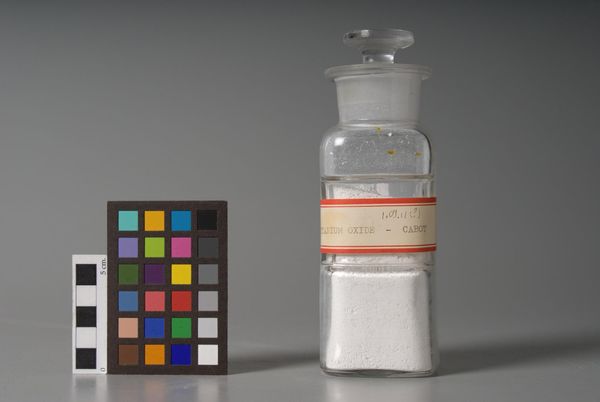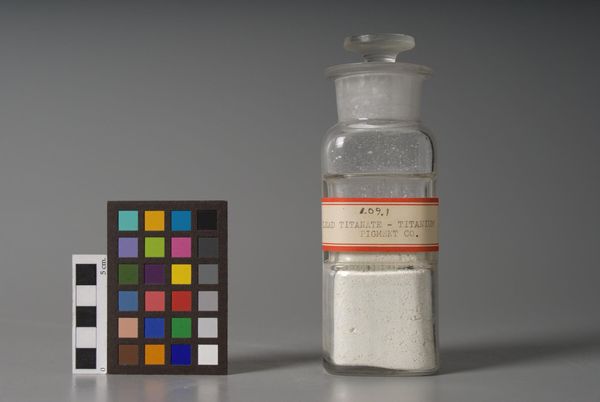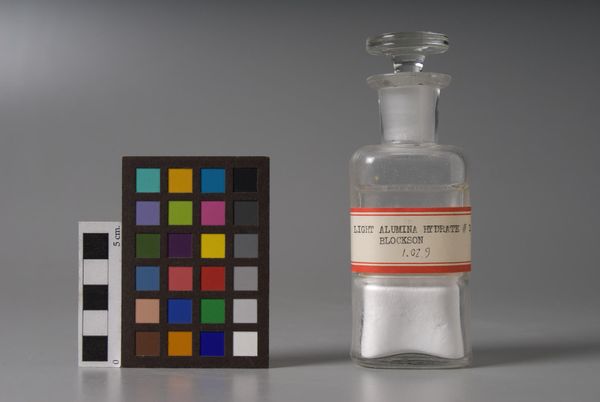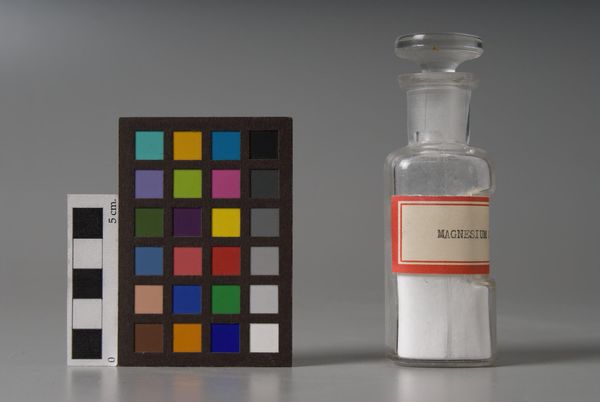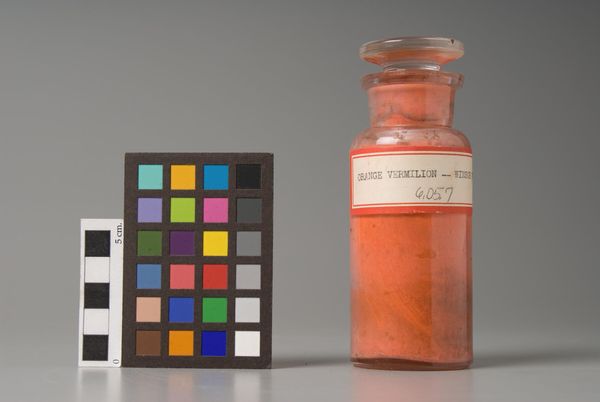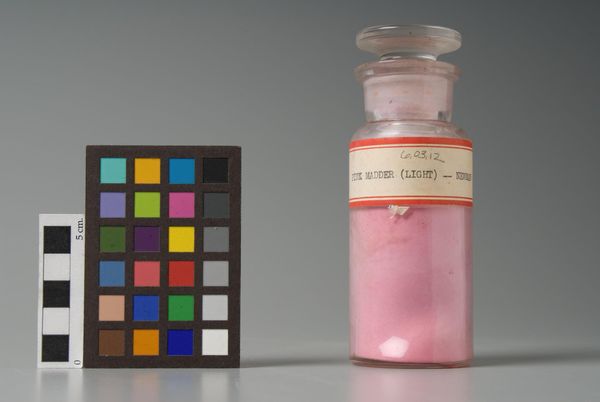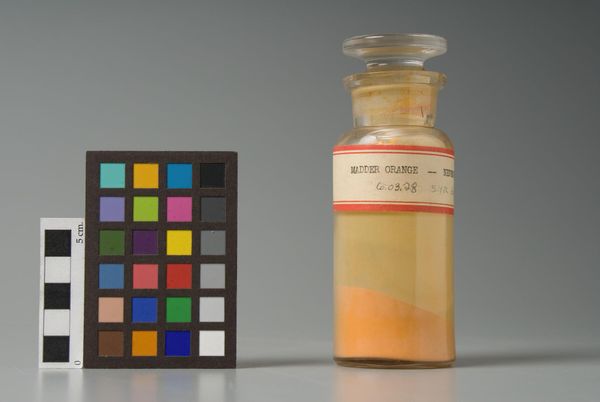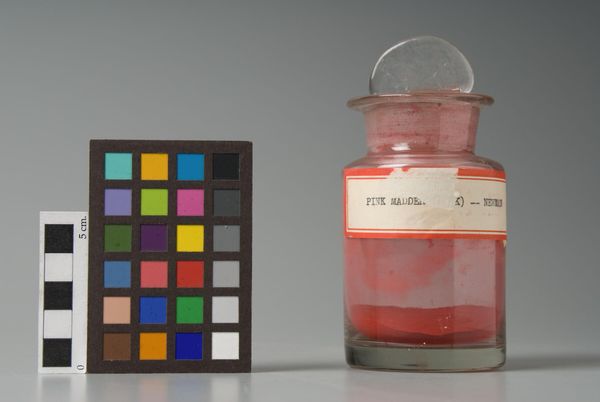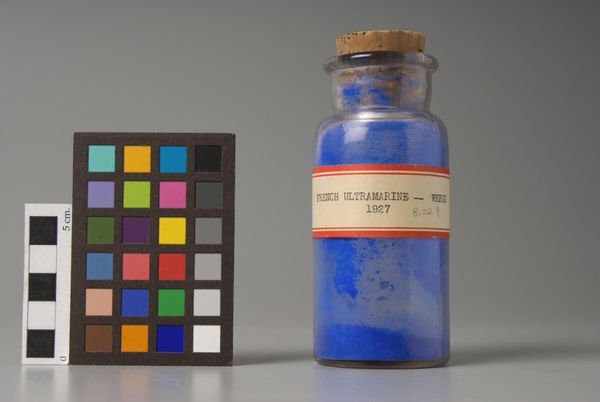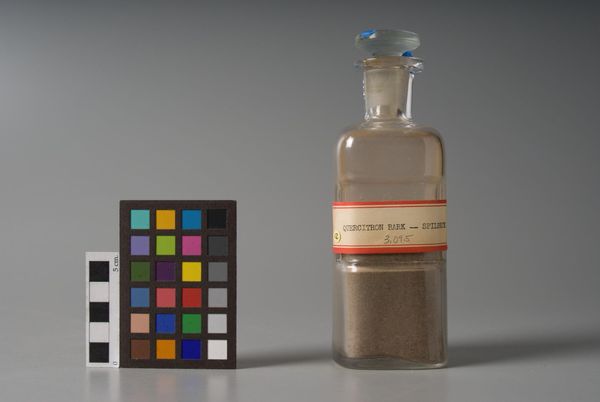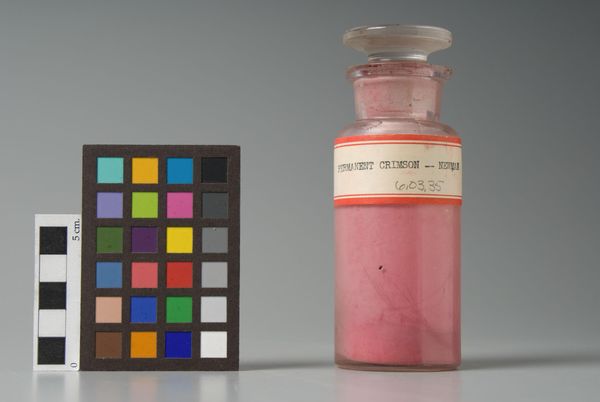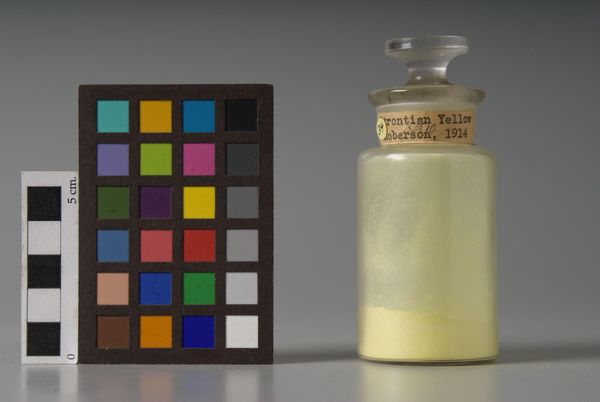
Copyright: CC0 1.0
Curator: This is "Titanium Magnesium," a manufactured object by Titanium Pigment Corp, part of the Harvard Art Museums collection. Editor: It strikes me as sterile, almost clinical, despite its simple composition. The white powder against the clear glass and the color checker feel very detached. Curator: Right, consider the historical context: early 20th-century industrial production. This pigment became essential, revolutionizing paint, paper, and plastics. Editor: Absolutely. It’s a potent symbol of industrialization and the chemical revolution. But also, this whiteness carries cultural weight, doesn’t it? Purity, cleanliness… Curator: Exactly. And let's not forget the socio-economic implications of mass-produced pigment. Suddenly, whiteness as a luxury color became democratized and widely accessible. Editor: I find myself reflecting on how the language of chemistry and corporate branding infiltrates art, shifting how we perceive value and authorship. Curator: It's a fascinating example of how industry shapes our visual world and the power dynamics inherent in the materials artists use. Editor: It certainly prompts a re-evaluation of what constitutes "art" and the narratives we construct around objects.
Comments
No comments
Be the first to comment and join the conversation on the ultimate creative platform.
